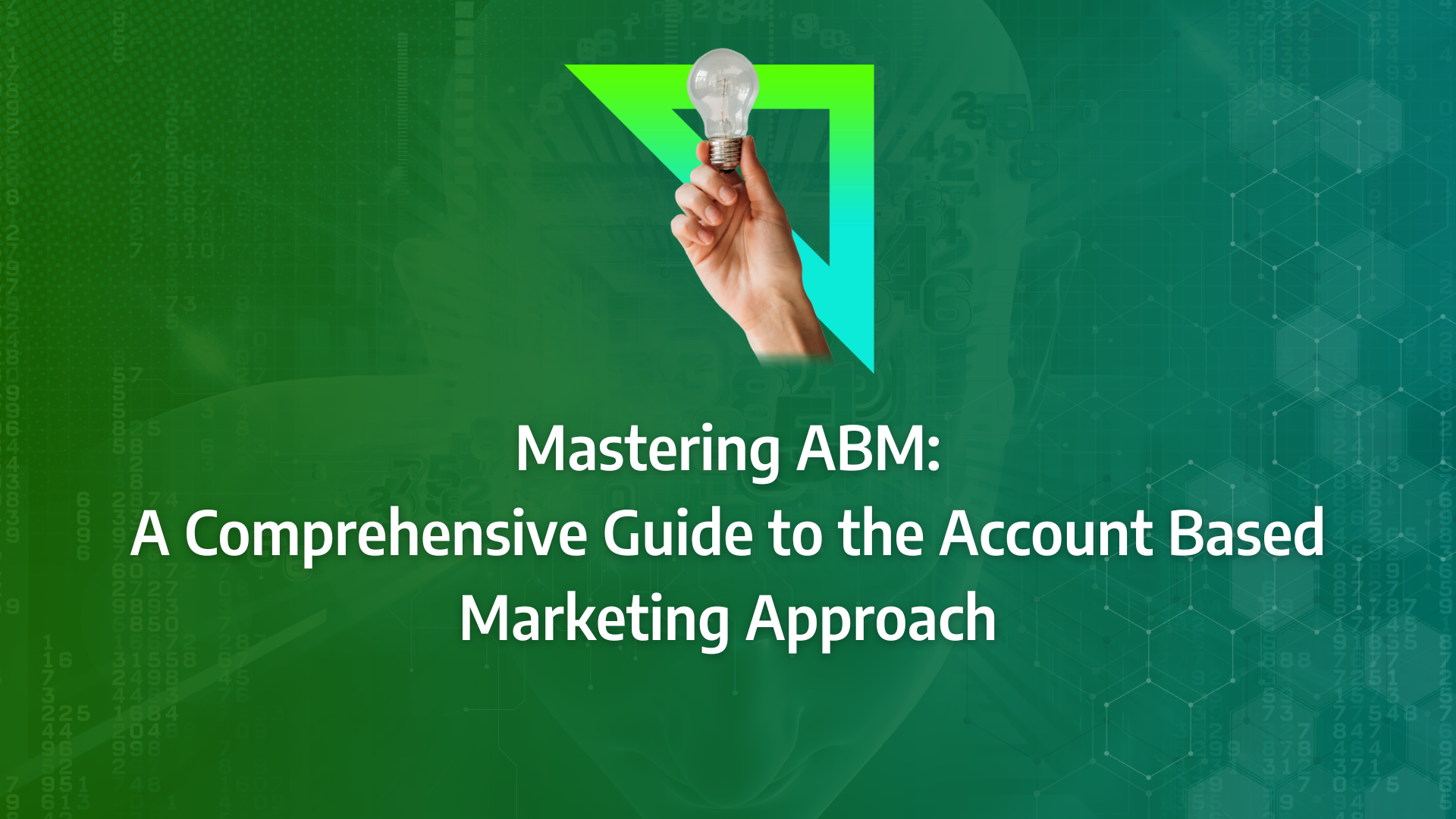Companies are constantly searching for ways to efficiently target and engage their most valuable clients. Enter the account-based marketing (ABM) approach—an advanced strategy that aligns marketing and sales efforts to focus on key accounts with the highest potential for revenue growth. But what makes ABM so effective?
By honing in on high-value accounts, ABM allows businesses to personalise their marketing efforts, ensuring that each message resonates deeply with the target audience. This targeted approach not only increases the likelihood of conversion but also strengthens client relationships over time. In fact, companies that have implemented ABM report significantly higher ROI compared to traditional marketing methods.
This guide will delve into the key components of ABM, offering insights into how you can leverage this powerful methodology to enhance your marketing strategy and drive sustained growth. Discover why leading B2B firms are turning to ABM and how you can implement it to see tangible results.
- Focus on High-Value Accounts: The ABM approach emphasises targeting and engaging high-value accounts that offer the greatest potential for revenue growth, ensuring marketing efforts are both strategic and effective.
- Personalisation at Scale: ABM allows for highly personalised marketing campaigns, tailored to resonate deeply with the specific needs and challenges of key accounts, leading to stronger client relationships and higher conversion rates.
- Alignment of Marketing and Sales: One of the core strengths of ABM is its ability to align marketing and sales teams, fostering collaboration and ensuring a cohesive strategy that directly targets the most valuable prospects.
- Data-Driven Insights: Successful ABM strategies rely on robust data analysis to identify and prioritise key accounts, enabling businesses to make informed decisions and optimise their marketing efforts for maximum impact.
- Proven ROI: Companies that implement ABM report significantly higher returns on investment compared to traditional marketing methods, making it a compelling strategy for businesses looking to maximise their marketing efficiency.
- Long-Term Client Relationships: By focusing on the needs of specific accounts, ABM helps to build long-term, sustainable relationships with clients, leading to increased loyalty and ongoing business growth.
How to Get Started with ABM
What is Account-Based Marketing?
Account-Based Marketing (ABM) is a strategic approach to B2B marketing that targets specific, high-value accounts. Rather than casting a wide net to attract leads, ABM focuses on identifying key accounts and tailoring marketing efforts to their unique needs and interests. This personalised approach involves a deep understanding of the target accounts and their pain points, allowing for more effective and efficient marketing strategies.
The advantages of adopting an ABM methodology are manifold:
- Increased Conversion Rates: By focusing on high-value accounts and customising marketing efforts to their specific needs, businesses can significantly increase their chances of conversion.
- Higher ROI: Targeting key accounts ensures that marketing resources are directed towards prospects most likely to convert, resulting in a higher return on investment.
- Improved Customer Relationships: ABM fosters the development of strong relationships with individual prospects, providing a more personalised and meaningful customer experience.
- Better Sales and Marketing Alignment: ABM necessitates close collaboration between sales and marketing teams, leading to improved alignment and a more effective sales process.
- Increased Brand Awareness: By delivering valuable content and insights to target accounts, ABM helps businesses establish themselves as thought leaders in their industry.
Defining Your Ideal Customer Profile (ICP)
An Ideal Customer Profile (ICP) is a detailed description of the type of buyers that would benefit most from your product or service. For instance, if you are selling SaaS solutions, your ideal customer might be accounts within the B2B tech industry. This can be further refined to a very specific profile such as “Midsize, B2B tech company, with 50-100 employees, located in the United States.”
Creating a precise ICP is crucial as it guides your ABM strategy and helps you start with a well-defined target account list. This does not mean you will only work with these customers, but it ensures that your ABM campaigns are focused and effective.
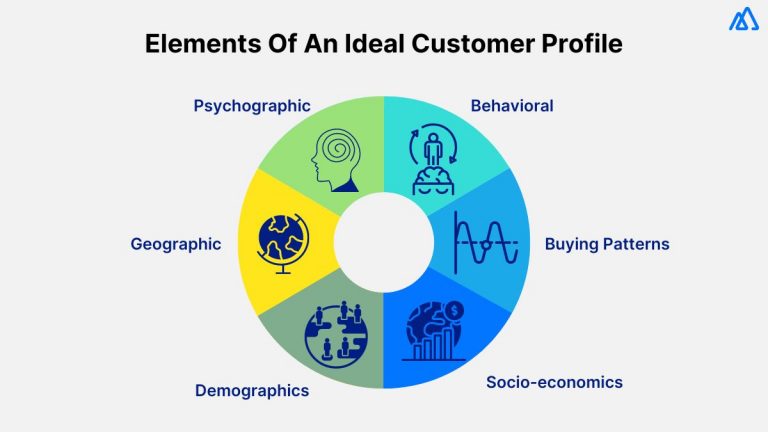
Elements of an Ideal Customer Profile
When building your ICP, consider the following elements:
- Industry: Identify the sectors your accounts operate in. For example, companies in healthcare will have different needs compared to those in manufacturing.
- Location: Determine where the accounts are based. Accounts in the United States will behave differently from those in EMEA or APAC regions.
- Size: Consider the scale of the account. Small, mid-size, and enterprise accounts will have different characteristics and market needs.
- Budget: Understand the typical contract value your ideal customer is willing to spend, based on your pricing strategy.
- Current Tech Stack: Assess the tools and technologies currently in use within the account’s tech stack, as this can influence their readiness to adopt your solution.
What Matters Most?
From our experience, the success of an ABM strategy hinges on deep alignment between sales and marketing, where both teams work in unison to address the unique needs of each target account. Clients often discover that implementing a tiered ABM strategy, where resources are allocated based on account value and potential, allows them to optimise impact without overextending resources. Typically, the integration of ABM with broader marketing efforts ensures that all touchpoints are cohesive, enhancing the overall customer journey and driving long-term relationships.Get In Touch
What strategies should I use to select the right accounts for ABM?
To create an effective account based marketing strategy, it is crucial to meticulously select the right accounts. The criteria for selecting ABM accounts will vary across businesses, depending on their specific goals. Some may prioritise high-value account tiers, while others might focus on key verticals or integrate their ABM initiatives with existing demand generation work. Before making these decisions, it’s prudent to define an ideal account profile based on your overall objectives, ranging from acquisition to buyer retention.
Standard Qualifiers for an ABM List
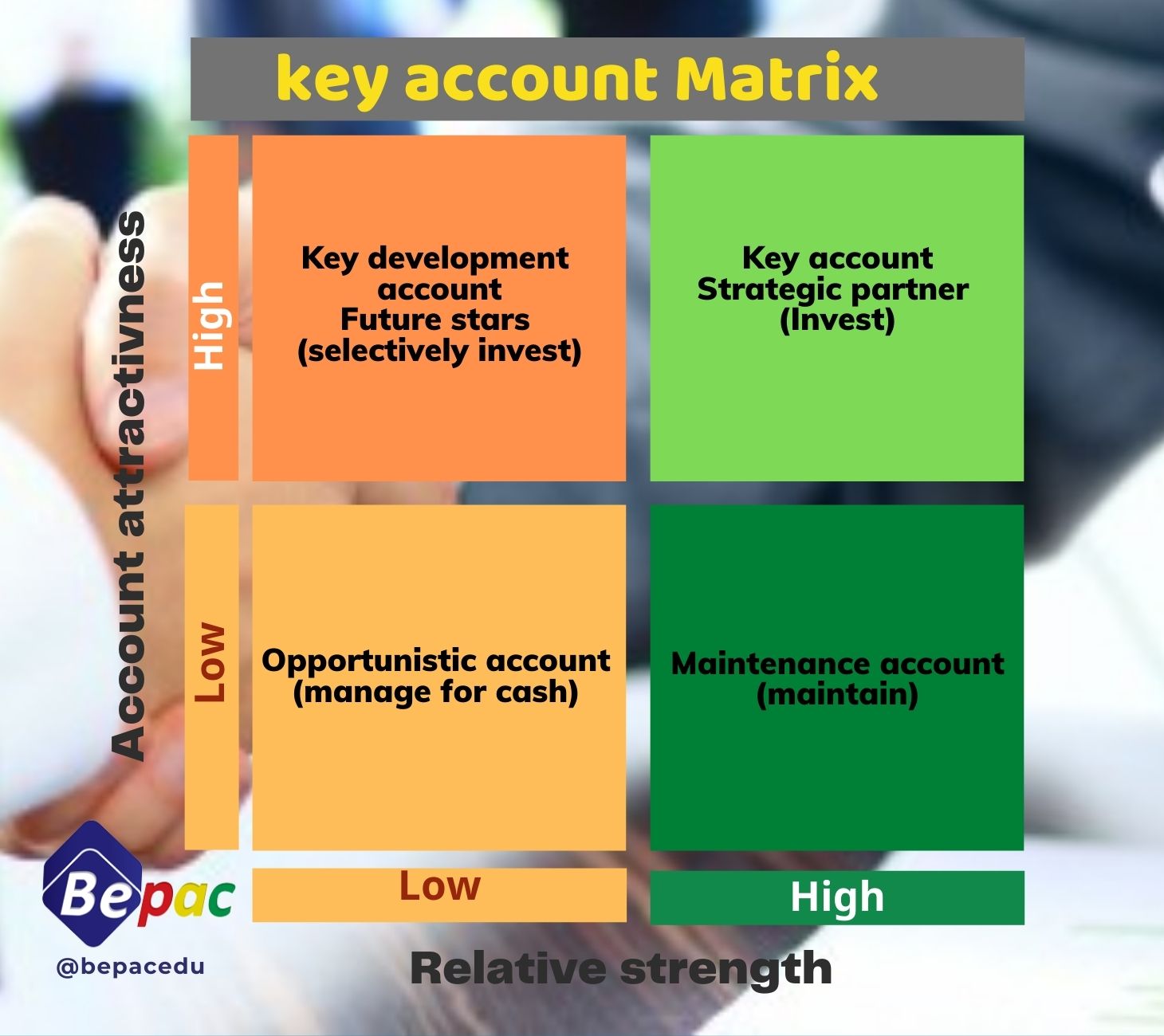
When assembling an ABM list, consider these standard qualifiers:
- High Yield: Identify top revenue generators and their characteristics. These accounts are likely to result in larger-than-average deals and generate substantial long-term revenue.
- Profitability: Look for accounts that align with your best buyer profile and select those existing buyers with cross-sell and upsell potential. This approach will help realise the highest revenue and greatest lifetime value.
- Product Fit: Target companies whose needs closely match your product offerings, as they are the most likely to purchase from you.
- Quick Wins: Focus on accounts with a short purchase decision process due to their size and structure, which can generate quick revenue.
- Territory: It’s beneficial to load the sales pipeline with accounts from specific geographic areas that align with your sales support.
- Competitors: Consider pursuing companies using competing products. If your competitors are successful with certain types of companies, targeting similar profiles could be advantageous.
- Leveraged Data: Utilise sales and marketing data to identify trends, historical data, CRM insights, and territories. This comprehensive data analysis will help pinpoint the most appropriate accounts to target.
Source: ITSMA
The Role of Customer Segmentation in Account-Based Marketing
Defining customer segments is an essential step in crafting targeted and effective ABM campaigns. Here are the key factors to consider:
- Identify Your Target Accounts: Begin by identifying the high-value accounts or strategic partners that are pivotal to your business.
- Determine Your Segmentation Criteria: Decide on the criteria to segment your accounts. This can include demographic information, behaviours, preferences, and other relevant factors.
- Analyse Customer Data: Collect and analyse data from various sources such as customer surveys, website analytics, and social media to gain insights about your audience.
- Create Segments: Using the defined criteria and gathered insights, group your target accounts into smaller, more defined segments. Ensure each segment is clearly and descriptively named.
- Review and Refine: Continuously review and refine your segments to ensure they accurately reflect your target audience and are effective for your ABM campaigns.
By following these steps, you can create customer segments that are precisely tailored to your target accounts. This segmentation will enable you to develop highly targeted ABM campaigns, increasing the likelihood of successful engagement and conversion.
Three Types of ABM
There are three primary approaches: Strategic, Marketing, and Programmatic. Visualise these three methods as a pyramid, with Strategic ABM at the top, followed by Marketing ABM (also known as ABM Lite), and Programmatic ABM at the base. As you move up the pyramid, the investment and return increase. Depending on your objectives, you may find it beneficial to employ more than one of these methods.
Strategic ABM
Strategic Account-Based Marketing is typically applied to pre-existing, high-value accounts. This strategy involves sales, marketing, and management working together closely to upsell and cross-sell to these clients. Strategic ABM requires the development of hyper-specific marketing strategies for a select number of high-value accounts, often between one and five.
This approach demands a significant investment of time and effort, necessitating a deep understanding of the target audience’s needs before committing to it. When conducting strategic ABM, targeting efforts can span months or even years, with ROI often measured over a multi-year period through one-to-one marketing initiatives.
Each step of the process, from developing personas to conducting research, should culminate in highly personalised messages that drive conversions. Strategic ABM is most effective for teams with a substantial budget, high-value existing clients, and the requisite time, resources, and personnel to execute it.
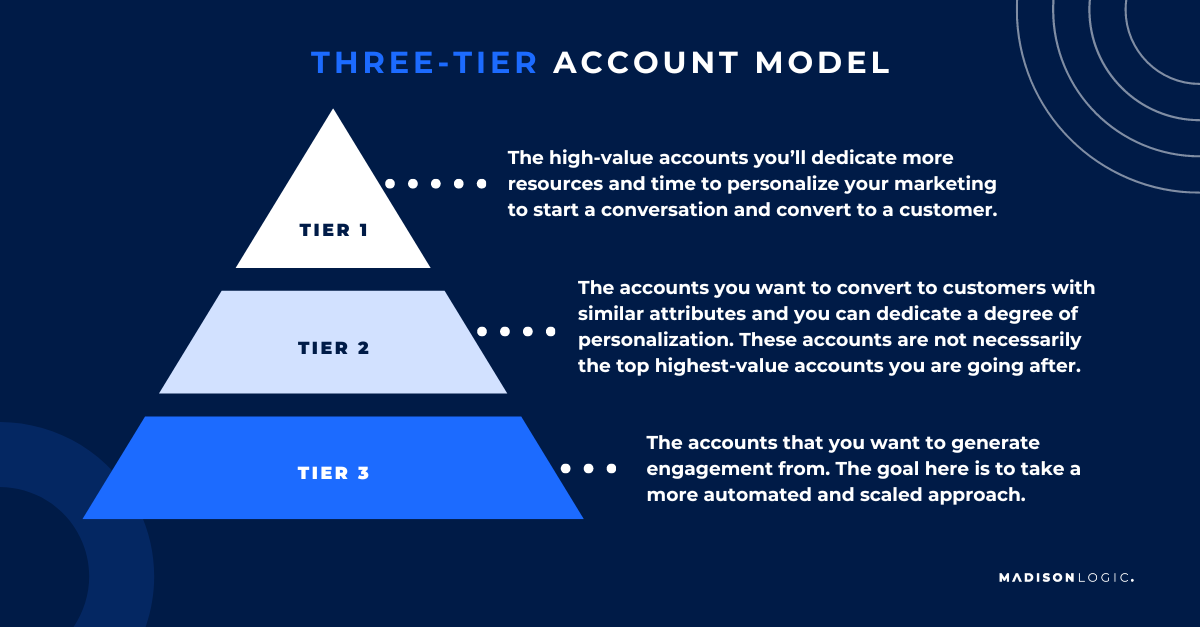
Marketing ABM
Marketing ABM, or ABM Lite, is suited for second-tier named accounts. This approach involves selecting 5-10 key accounts that share common problems, objectives, and requirements. Unlike Strategic ABM, ABM Lite does not demand extensive attention to each customer’s unique needs and desires.
Organisations with some flexibility in their budgets, who can allocate additional resources and personnel, will benefit from ABM Lite. When developing these B2B account groups, leverage your in-depth knowledge of prospective customers’ personas, profiles, and segments. Despite the lighter touch, personalised messages can still be effectively sent to these accounts.
Programmatic ABM
The foundation of the ABM pyramid is Programmatic Account-Based Marketing, also known as one-to-many marketing. Programmatic ABM, like ABM Lite, segments accounts based on their commonalities and differences in the opportunities and threats they face. However, it clusters hundreds or even thousands of accounts based on client profiles, rather than focusing on just a few.
Programmatic ABM teams often use customer relationship management (CRM) software or marketing automation platforms like Eloqua, Marketo, or Pardot. These tools help organise their clientele into segments and send tailored messages based on factors such as industry and geography.
Programmatic ABM allows even smaller businesses with limited resources to begin targeting accounts. While the consumer remains central in sales and marketing efforts, fewer person-hours and financial resources are required.
Our Tactical Recommendations
In our work, clients often see substantial results by starting small with a pilot ABM programme, allowing them to prove value and refine their approach before scaling. It’s typically effective to use account intelligence to drive personalisation at scale, ensuring that each interaction feels tailored and relevant. Additionally, focusing on the quality of interactions rather than quantity often yields better outcomes, as this approach ensures that every engagement adds meaningful value to the relationship.Get In Touch
ABM Pillars and Best Practices
To implement a successful account based marketing approach, it is essential to establish a foundation built on five critical pillars. These pillars will guide your ABM campaigns and ensure they are effective and robust.
Develop Your Target Account List (TAL)
Start by clearly identifying the companies you aim to target. This involves utilising your Ideal Customer Profile (ICP) parameters to create a list of companies that fit these criteria. Collaboration between sales and marketing teams is crucial in any ABM programme. Typically, the sales team takes the lead in developing the TAL. If your initial list seems limited, expand it by including lookalike accounts. Tools like Dun & Bradstreet and Zoominfo can help enhance and broaden your TAL.
Create Your Data Strategy
With your TAL established, the next step is to outline the data parameters that will help structure the information for each account. Data is usually categorised into firmographic (company information), demographic (buyer information), technographic (technology used), and psychographic (behavioural and intent data). Organising this data enables you to determine ‘FIT’ scores for each account. Higher scores indicate stronger readiness signals, aiding in prioritisation.
Focus on Hyper-Personalisation
A key differentiator of an account based marketing approach compared to traditional marketing methods is the level of personalisation. You should have content mapped across the funnel to nurture various members of the buying party. Consider how you can personalise your messaging in media, communications, and channels for your TAL. For instance, develop custom campaign pages for specific segments, ensuring all content is relevant to that segment. Modern tools and platforms enable personalisation down to company details, such as showing specific content and company logos based on a visitor’s IP address. Advertising partners like Demandbase can customise display ads for targeted companies.
Align Team Efforts
Aligning sales (both inside sales and field executives) and marketing teams is critical for any ABM campaign. This coordination is often achieved through regular account huddles where both teams review ABM activities to advance key accounts. Marketing can support sales by providing essential assets such as playbooks, tailored content, and drafting sales sequences. These structured resources are crucial in guiding engaged members of the buying party through the sales funnel.
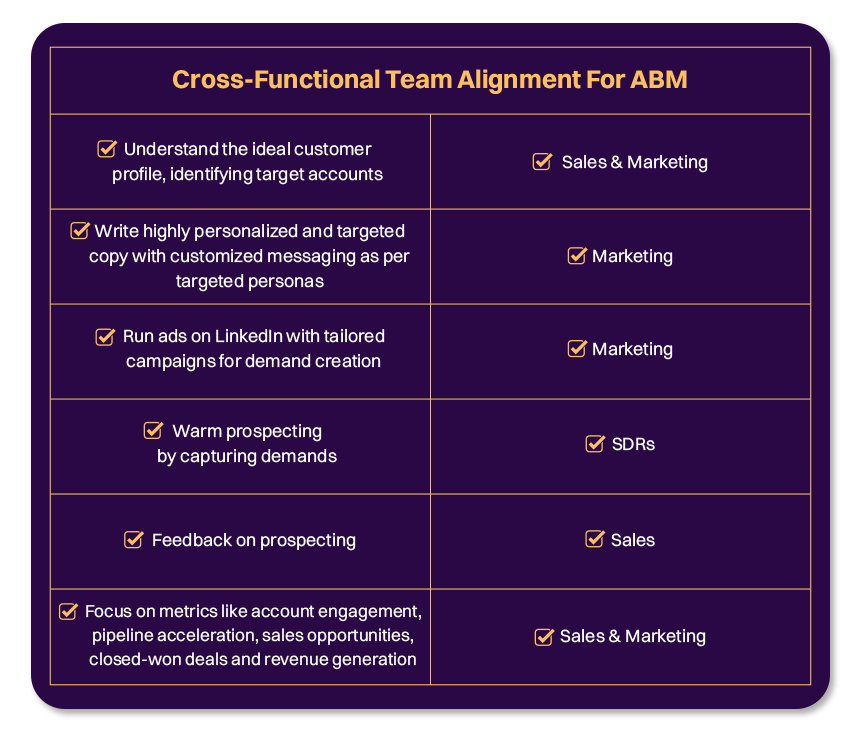
Tailor Your Website to Target Specific Verticals
A generic landing page may serve unknown visitors, but your ABM buyers require a more personalised approach. These buyers are not faceless entities; they have specific needs and interests that must be addressed directly.
Consider how you are organising your target account list. Rather than treating each account separately, categorise them around specific niches such as industry or funnel stage. This categorisation allows you to tailor the site experience, making it both easy and engaging for your buyers.
For example, you can utilise these verticals to create a series of personalised landing pages. The level of personalisation can vary from the content displayed (such as case studies relevant to the account’s industry) to the copy used to engage your buyers. This approach ensures that your website resonates with the specific needs of each vertical.
Follow Ups
Instead of a traditional email follow-up, consider using video. After a meeting or event, we find it effective to send buyers a Drift Video, recapping key takeaways and encouraging them to book the next meeting. Using video adds a personal touch to routine communication, making it feel more authentic and engaging.
Follow-up messages should aim to encourage buyers to take the next step. To achieve this, your messaging must be both strategic and accurate. This is best accomplished through active collaboration between your sales and marketing teams.
When marketing and sales work together, you can craft follow-up messages tailored to your buyer’s needs, acting as effective calls to action (CTAs). At Drift, we remind our sales teams about upcoming webinars and events so they can incorporate this information into their follow-ups with target accounts.
Source: SiriusDecisions
Leverage Intent Data for Personalised Buyer Journeys
Intent data provides valuable insights into the behaviour and interests of your target accounts. By using third-party data collection tools, you can gauge customer intent and create personalised buyer journeys. Understanding the specific topics and interests of your target accounts allows you to develop tailored content and marketing campaigns that address their unique needs. This level of personalisation enhances engagement and improves the likelihood of conversion.
ABM Challenges and Pitfalls & How to Overcome Them
Lack of Leadership Buy-In
A critical factor in the success of an account based marketing approach is securing buy-in from the C-suite. Without full support and understanding from leadership, ABM initiatives can falter. Merely ‘trying out’ ABM is insufficient; it demands dedication and resources over a longer period than most marketing campaigns. For effective ABM, the CEO should drive the collective vision and set expectations. The CFO needs to educate the organisation on current revenue sources and future growth prospects, while the CRO should implement compensation plans that incentivise the sales team. The CMO plays a crucial role in promoting alignment and fostering cross-team collaboration.
Misaligned OKRs and KPIs
Quarterly KPIs Versus Long-Term ABM Goals: Typically, business KPIs are evaluated on a quarterly basis, but an account based marketing approach requires a long-term perspective. ABM engagement metrics may not correspond with standard short-term targets, necessitating a permanent recalibration of how KPIs are defined and measured. This recalibration must be endorsed by executive leadership to ensure successful implementation.
Shifting Marketing KPIs for ABM Campaigns
Adjusting marketing KPIs for an ABM methodology involves acknowledging that ABM is a long-term commitment, usually spanning 18 to 24 months of continuous, multi-channel activity. It is crucial to optimise the use of each channel at the appropriate time with sufficient, engaging content to maintain customer interest. Rather than focusing on ‘vanity metrics’ such as email open rates, social media likes, and offline engagement, the emphasis should be on core KPIs. These core KPIs include:
- Reputation: Metrics such as brand perception, Net Promoter Scores (NPS), and customer loyalty.
- Relationships: Measures of account coverage and engagement.
- Revenue: Key performance indicators such as opportunities generated, win rate, average deal size, and customer lifetime value.
Inadequate Account Selection: Selecting the wrong accounts to target can waste resources and diminish the effectiveness of your ABM strategy. Developing a robust account selection process is crucial. Utilise data and analytics to identify high-value accounts with the greatest potential for revenue growth. Consider factors such as account fit, intent data, and engagement history. A well-defined Ideal Customer Profile (ICP) can guide your selection process and ensure focus on accounts most likely to benefit from your offerings.
Neglecting Multi-Channel Engagement: Relying on a single channel to engage target accounts is a common pitfall. To maximise reach and engagement, adopt a multi-channel approach. Use a mix of email, social media, web personalisation, events, and direct mail to interact with your target accounts. Ensure consistent messaging across all channels, and that each touchpoint adds value to the account’s journey.
